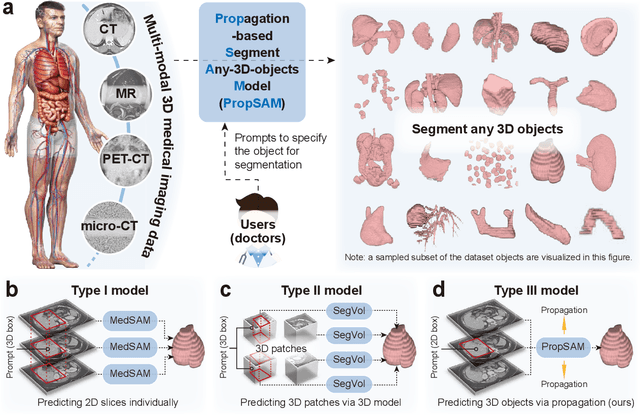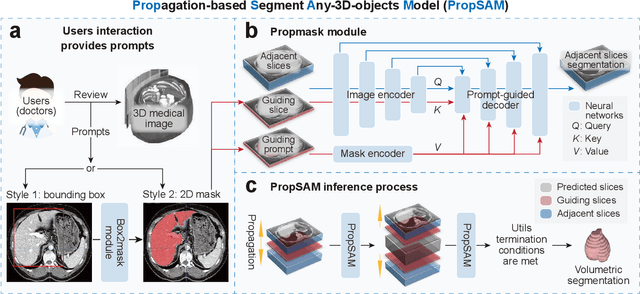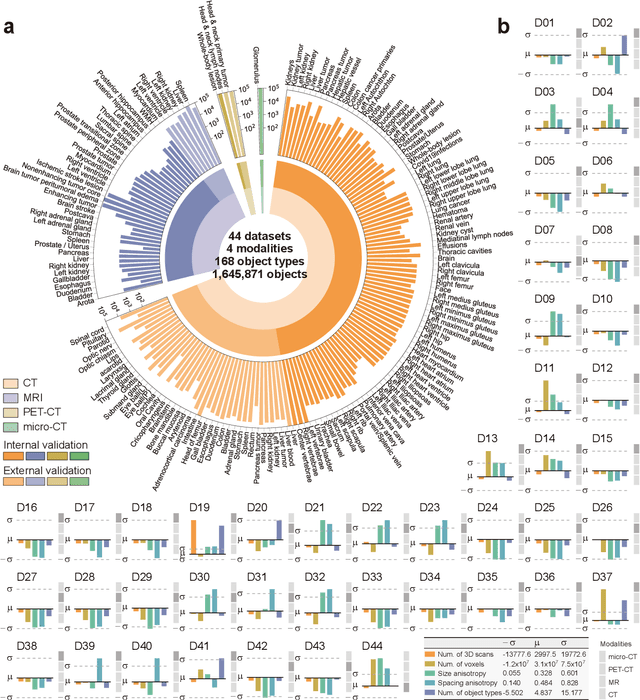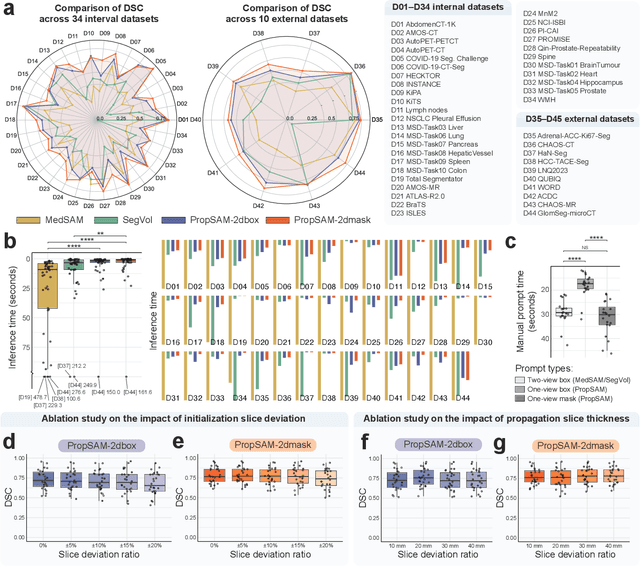Zilin Lin
PropSAM: A Propagation-Based Model for Segmenting Any 3D Objects in Multi-Modal Medical Images
Aug 25, 2024



Abstract:Volumetric segmentation is crucial for medical imaging but is often constrained by labor-intensive manual annotations and the need for scenario-specific model training. Furthermore, existing general segmentation models are inefficient due to their design and inferential approaches. Addressing this clinical demand, we introduce PropSAM, a propagation-based segmentation model that optimizes the use of 3D medical structure information. PropSAM integrates a CNN-based UNet for intra-slice processing with a Transformer-based module for inter-slice propagation, focusing on structural and semantic continuities to enhance segmentation across various modalities. Distinctively, PropSAM operates on a one-view prompt, such as a 2D bounding box or sketch mask, unlike conventional models that require two-view prompts. It has demonstrated superior performance, significantly improving the Dice Similarity Coefficient (DSC) across 44 medical datasets and various imaging modalities, outperforming models like MedSAM and SegVol with an average DSC improvement of 18.1%. PropSAM also maintains stable predictions despite prompt deviations and varying propagation configurations, confirmed by one-way ANOVA tests with P>0.5985 and P>0.6131, respectively. Moreover, PropSAM's efficient architecture enables faster inference speeds (Wilcoxon rank-sum test, P<0.001) and reduces user interaction time by 37.8% compared to two-view prompt models. Its ability to handle irregular and complex objects with robust performance further demonstrates its potential in clinical settings, facilitating more automated and reliable medical imaging analyses with minimal retraining.
Beyond Discrete Genres: Mapping News Items onto a Multidimensional Framework of Genre Cues
Dec 08, 2022



Abstract:In the contemporary media landscape, with the vast and diverse supply of news, it is increasingly challenging to study such an enormous amount of items without a standardized framework. Although attempts have been made to organize and compare news items on the basis of news values, news genres receive little attention, especially the genres in a news consumer's perception. Yet, perceived news genres serve as an essential component in exploring how news has developed, as well as a precondition for understanding media effects. We approach this concept by conceptualizing and operationalizing a non-discrete framework for mapping news items in terms of genre cues. As a starting point, we propose a preliminary set of dimensions consisting of "factuality" and "formality". To automatically analyze a large amount of news items, we deliver two computational models for predicting news sentences in terms of the said two dimensions. Such predictions could then be used for locating news items within our framework. This proposed approach that positions news items upon a multidimensional grid helps in deepening our insight into the evolving nature of news genres.
 Add to Chrome
Add to Chrome Add to Firefox
Add to Firefox Add to Edge
Add to Edge